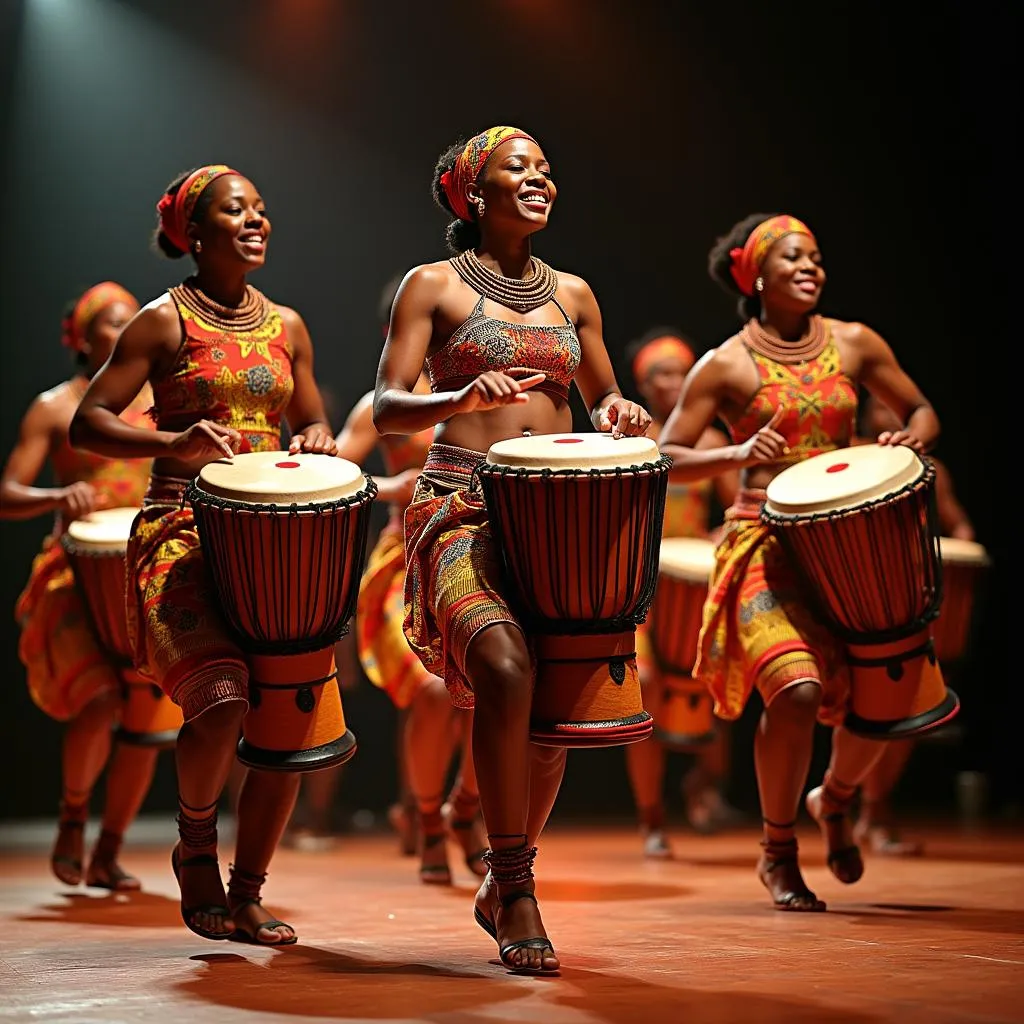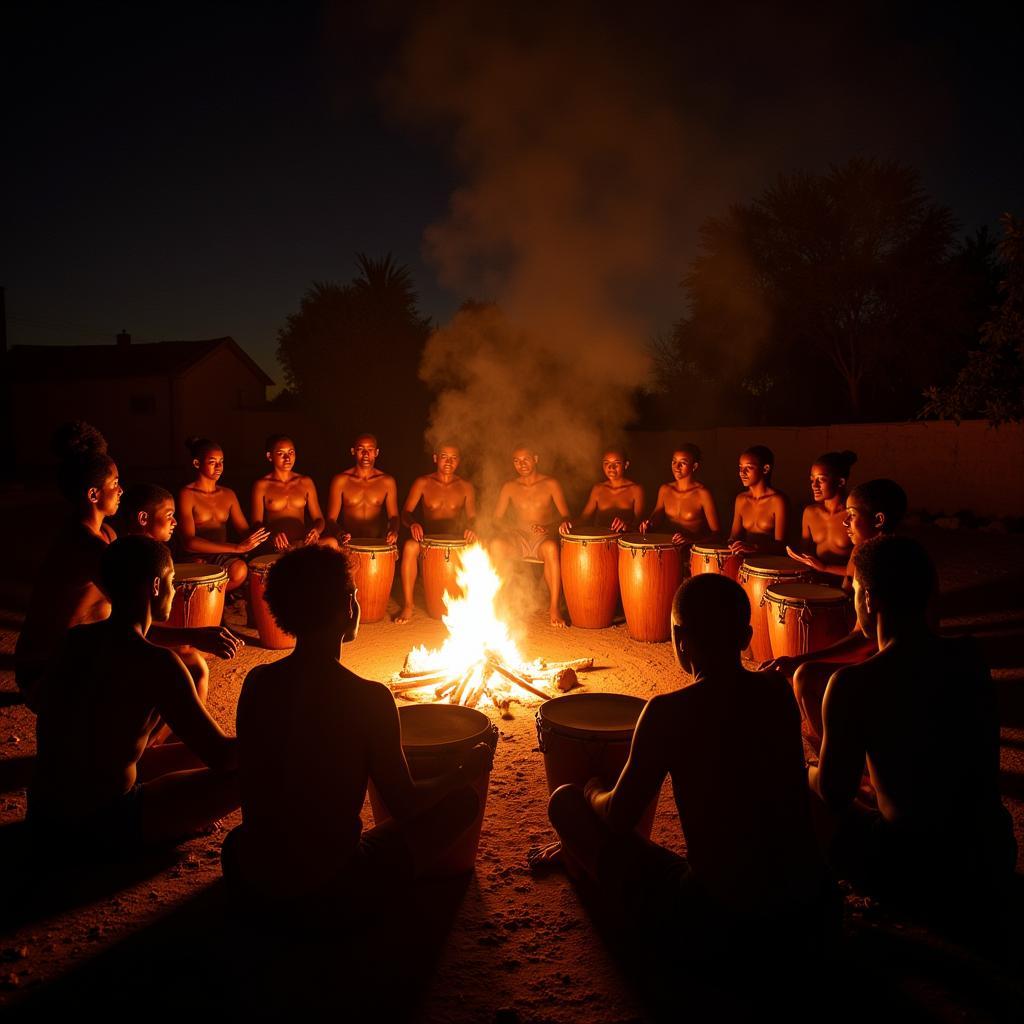Mastering the Art of African Braiding Techniques
African Braiding Techniques are more than just hairstyles; they are intricate art forms passed down through generations, reflecting a rich cultural heritage and expressing individual style. From the tight coils of cornrows to the flowing elegance of box braids, these techniques represent a diverse tapestry of creativity and tradition. This article delves into the captivating world of African braiding, exploring its history, diverse styles, and the essential techniques that make it so unique.
The history of African braiding is deeply rooted in cultural identity and social status. For centuries, different braiding patterns signified age, marital status, and even tribal affiliation. These intricate designs weren’t just about aesthetics; they served as a visual language, communicating important information within communities. Today, these techniques continue to evolve, blending traditional methods with modern trends, creating a dynamic and vibrant art form that resonates globally. Check out some inspiring round face styles at african american hairstyles round faces.
Exploring Traditional African Braiding Techniques
Traditional African braiding encompasses a wide range of styles, each with its own unique character and significance. Cornrows, characterized by their tight, raised braids that follow the contours of the scalp, are a popular and versatile style. Box braids, known for their defined square or rectangular shape, offer a protective and stylish option. Senegalese twists, created by twisting two strands of hair together, create a textured and elegant look. These are just a few examples of the diverse and captivating world of traditional African braiding.
The Significance of Braiding in African Culture
Braiding plays a vital role in many African communities, extending beyond mere aesthetics. It is a social activity, often bringing women together to share stories and build bonds while creating intricate hairstyles. Braiding also serves as a way to preserve cultural heritage, passing down traditional techniques and patterns from one generation to the next. Furthermore, specific hairstyles can hold symbolic meaning, representing various aspects of life, from spirituality to social standing.
Modern Interpretations of African Braiding
While traditional techniques remain at the heart of African braiding, modern interpretations have added a fresh perspective. The incorporation of beads, shells, and other adornments adds a touch of personality and flair. Experimenting with different braid sizes and patterns allows for endless creativity. The fusion of traditional methods with contemporary trends has led to the emergence of innovative styles that cater to diverse tastes and preferences. Find more inspiration from past trends at african hairstyles 2019.
Achieving the Perfect Braid: Tips and Tricks
Achieving beautifully crafted braids requires patience, practice, and attention to detail. Proper preparation is essential. Clean, detangled hair is crucial for a smooth and even braid. Using the right products, such as moisturizing creams and braid sprays, can help maintain healthy hair and prevent breakage. Mastering the basic braiding technique involves dividing the hair into sections and weaving the strands together tightly and evenly. With practice and dedication, anyone can achieve stunning results. Need help finding a salon? Check out african american hair salons in portland oregon.
Caring for Your Braids: Maintaining Health and Longevity
Proper maintenance is essential for keeping braids looking their best and promoting healthy hair. Regular moisturizing helps prevent dryness and breakage. Protecting braids at night with a satin scarf or bonnet minimizes friction and keeps the style intact. Avoiding excessive tension during braiding and taking breaks between styling sessions can help prevent hair damage. By following these simple tips, you can ensure the longevity and health of your braids. For visual inspiration, see african hair cut style photos.
“Braiding is a powerful tool for self-expression and cultural preservation,” says renowned hair stylist Anika Nkosi from Johannesburg. “It connects us to our ancestors and allows us to share our heritage with the world.”
“Each braid tells a story,” adds Adeola Ojo, a traditional braider from Lagos, Nigeria. “It’s a celebration of our identity and a testament to the artistry of African women.”
“The beauty of African braiding lies in its versatility,” shares Fatima Diallo, a Senegalese hair artist. “From traditional styles to modern interpretations, there’s a braid for everyone.” Explore more options with african hair style images png.
In conclusion, African braiding techniques offer a captivating glimpse into a rich cultural heritage while providing a platform for individual expression. From the intricate patterns of cornrows to the elegant twists of Senegalese braids, these techniques continue to evolve and inspire. By understanding the history, embracing the diversity, and mastering the essential techniques, you can appreciate the artistry and significance of African braiding.
FAQ
-
How long do braids typically last? Braids can last anywhere from a few weeks to several months, depending on the style, maintenance, and hair type.
-
Can I braid my own hair? Yes, with practice and patience, you can learn to braid your own hair. There are numerous tutorials and resources available online and in-person.
-
What are the best products to use for braid maintenance? Moisturizing creams, oils, and braid sprays are essential for keeping braids hydrated and preventing breakage.
-
How do I prevent my braids from itching? Keeping your scalp clean and moisturized can help prevent itching. Avoid using products with harsh chemicals or fragrances.
-
Can I swim with braids? Yes, you can swim with braids, but it’s important to rinse them thoroughly with fresh water afterward and allow them to dry completely.
-
How often should I wash my braids? Washing your braids every two to three weeks is usually sufficient.
-
How do I remove braids safely? It’s important to take your time and gently unravel each braid to avoid hair damage.
For further assistance, please contact us at +255768904061, kaka.mag@gmail.com or visit us at Mbarali DC Mawindi, Kangaga, Tanzania. We have a 24/7 customer service team available to help.




